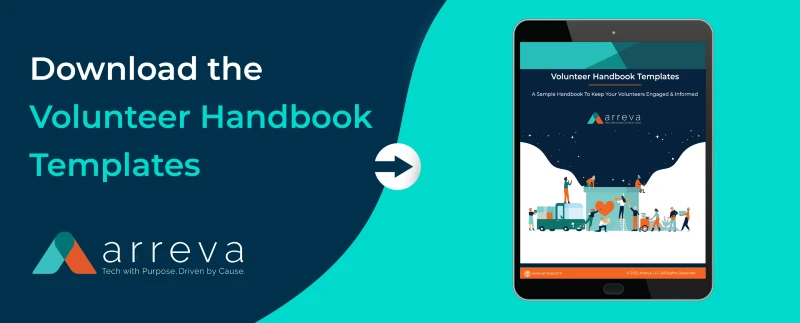The Importance of Volunteer Check-Ins for Your Nonprofit

Approximately 100 million people volunteer for nonprofits each year. In fact, volunteers are responsible for bringing in upwards of $150 billion annually. They’re also invaluable assets that allow you to expand customer service and community outreach while simultaneously reducing the cost of services and making them more widely available.
But what happens when a volunteer burns out?
Just like employees can burn out in a job—feeling tired, stressed, and unfulfilled—so can volunteers. Burnout is often the last experience a volunteer has before they quit.
Maybe you’ve seen it before. An enthusiastic supporter starts to complain that it’s not fun anymore. Or they seem cranky and combative when they used to be eager to help. You may notice that they don’t perform as they used to or don’t show up at all.
It can be hard to restore that kind of enthusiasm once it’s gone, so let’s talk about a few proactive things your NPO can do to avoid volunteer burnout and keep them engaged.
Make check-ins a regular practice
What’s the easiest way to streamline communication and ensure your volunteers are satisfied? Never go silent! Friendly, open relationships don’t materialize from thin air. A culture built around communication needs to be established and maintained.
Reach out to your supporters on a regular basis. Use newsletters to keep them updated on the impact their contributions make.
Use social media to spotlight or thank volunteers for doing big things. Respond quickly when they reach out for support. Use survey tools like SurveyMonkey to ask for feedback and listen to the responses you get.
Even when fundraising, volunteer management, and donor relation efforts seem to be in place, collaborate with volunteers on the status of your organization as a whole. You never know new ideas may be brought to the table.
Also, take the time to practice constructive feedback. If they did something amazing, tell them you thought so. If you see room for improvement, make a friendly suggestion. The best way to do this is to have an in-person conversation, but if your volunteers aren’t local, a phone call or email can work. Notice what they’re doing for you and show them your gratitude.
Ditch the micromanagement approach
Delegation is one of the best weapons you have in the fight against burnout.
NPO founders generally start their organization after years of service to the cause. So there is an immense pride and sense of ownership in what you’ve built—and a fierce desire to protect it.
However, micromanaging your volunteers because you can’t let go can appear to volunteers as a lack of trust. When you don’t let them experience that same sense of pride, ownership, and responsibility, they’ll begin to wonder if the time and effort are worth the reward. And that begins the negative thought patterns that lead to burnout.
Delegation has multiple benefits:
- Leaders are able to pass along repetitive and time-consuming tasks so they can focus on growing the organization
- Volunteers are able to spice up their normal routine, take pride in new responsibilities, and feel like they’re making a real contribution to the organization and their cause
- Because delegating a task requires communication, it creates new opportunities to deepen relationships and improve the team dynamic
Just keep in mind that volunteers don’t usually have equal responsibilities. Make sure you’re clear from the beginning on the time and resources a volunteer can dedicate. Giving them too much or too little can lead to burnout. Generally, 15 percent of volunteers shoulder a majority of the work.
Strengthen the team bond
Despite your efforts to switch up roles and responsibilities, service work can feel like all give and no get. And while that’s really the point of volunteering, it can be hard for volunteers to find their place. Planning activities where your volunteers to bond outside of the work they’re doing for the cause can show them how much you appreciate them—not just for the free support, but as people committed to the cause—and create a sense of community and belonging that keep them engaged.
Schedule regular teambuilding activities—a team dinner, a bowling outing, a picnic where they can bring family and friends, or even an ice cream party during your next strategic fundraising meeting. Ask your volunteers what they would enjoy and make an effort to do something that they’ll want to be part of. This establishes a rapport between volunteers that allows them to speak up and help when it seems like a team member is burning out. And that gives you the opportunity to do something before they decide to quit.
Consider that your volunteers will also need downtime
A recent study revealed that each volunteer in the U.S. dedicated an average of 52 service hours to NPOs from 2014-2015. And while they may be 100% committed to the cause, these extraordinary people are providing their services to your organization without compensation. When they’re sick or need to deal with an emergency at home, how you handle their request for time off can influence the level of burnout they experience. Resentment only grows when a need goes unmet.
Consider what your process is for taking time off. Is it easy to communicate with volunteer managers? What attitude are these requests met with? When volunteers know their worth and how to ask for the things they need, you’ll prevent the resentment and overwork that leads to burnout.
Simplify volunteer management
The difference between a thriving volunteer program and a dwindling supply of voluntary support ultimately comes down to one thing: communication. Discover how our all-in-one online fundraising software can help you improve communication with your volunteers. Schedule a free demo today.


